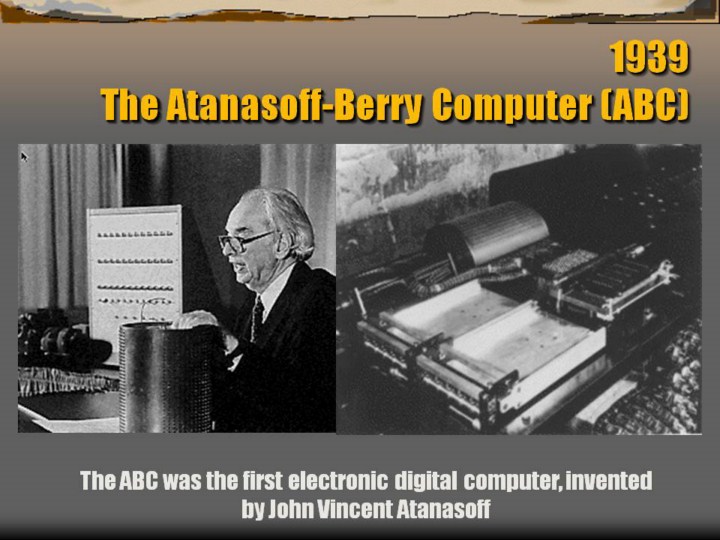 |
The ABC was a digital computer, so-called because it processed data in
discrete, digital units (the digits 1 and 0). It also used the binary (base
2) number system in computation, the results being converted to and from
decimal (base 10) for the purposes of human consumption. Being binary, the
data could easily be represented electronically since switches natural have
two states—on and off—which lend themselves to representing the numbers or
values 1 and 0. The ABC used vacuum tubes, punched cards and a memory
device that looked like a drum (shown in the pictures on the slide being
held by Atanasoff and as it was located in the working machine).
|
